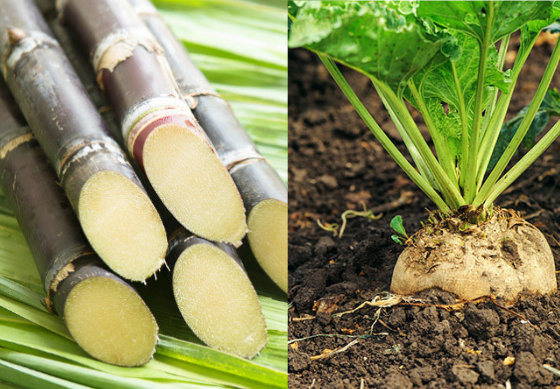The difference between beet sugar vs cane sugar extends beyond flavor to how they are grown.
The difference between beet sugar vs cane sugar extends beyond flavor to how they are grown.
Blog Article
Discover the Uses and Perks of Beet Sugar Vs Cane Sugar in Your Daily Diet
Discovering the unique high qualities of beet and cane sugar reveals even more than just their sweetening capacities; it highlights their special effect on wellness and culinary arts. Beet sugar, recognized for its subtle flavor, is frequently preferred in delicate treats, whereas cane sugar, with its hint of molasses, includes richness to durable dishes. Each kind holds its own nutritional account and glycemic ramifications, welcoming a deeper understanding of their duties in a balanced diet regimen and lasting usage practices.
Beginning and Manufacturing Processes of Beet and Cane Sugar

The unique environments and soil types needed for growing sugar beets and sugarcane contribute to distinctions in their cultivation practices and geographical distribution, influencing the economics and sustainability of their manufacturing. beet sugar vs cane sugar.
Nutritional Comparison Between Beet Sugar and Cane Sugar
Despite originating from various plants, beet sugar and cane sugar are nutritionally really similar, both mainly being composed of sucrose. Each gives about 4 calories per gram, equating to approximately 16 calories per teaspoon. Structurally, both sugars are composed of around 99.95% sucrose, with marginal quantities of various other substances like moisture and trace minerals, which do not dramatically alter their dietary profiles.

Eventually, when choosing in between beet sugar and cane sugar based on nutritional content alone, both offer identical benefits and downsides as they are basically types of the exact same molecule-- sucrose, providing fast power without various other nutrients.
Effect On Wellness: Glycemic Index and Caloric Content
Discovering further right into the results of beet sugar and cane sugar on health and wellness, it is vital to consider their glycemic index and calorie material. The glycemic index (GI) of both beet and cane sugar is around 65, classifying them as high-GI foods, which can create quick spikes in blood glucose levels.
Each kind of sugar has around 4 calories per gram, making their caloric web content equivalent. For those keeping an eye on caloric intake, specifically when managing weight or metabolic health and wellness problems, recognizing this equivalence her latest blog is essential (beet sugar vs cane sugar). Too much consumption of any kind of high-calorie, high-GI food can add to health and wellness problems such as obesity, heart illness, and insulin resistance.
Environmental and Economic Considerations of Sugar Manufacturing
Beyond health and wellness effects, the production of beet and cane sugar additionally raises substantial environmental and economic problems. Sugar beet cultivation tends to call for cooler climates and has a lower geographical impact contrasted to sugar cane, which prospers in exotic regions.
Furthermore, making use of pesticides and fertilizers in both beet and cane sugar cultivation can result in dirt degradation and pollution, additional affecting biodiversity and local water bodies (beet sugar vs more helpful hints cane sugar). The option in between cultivating sugar beet or cane frequently rests on local environmental conditions and economic aspects, making the sustainability of sugar manufacturing a complicated concern
Culinary Applications and Flavor Differences
While the environmental and financial aspects of sugar manufacturing are undoubtedly substantial, the option between beet and cane sugar likewise affects culinary applications and taste profiles. Beet sugar, derived from the sugar beet plant, is understood for its incredibly neutral taste. This makes it a versatile ingredient in baking, where it does not alter the taste of other parts. It dissolves quickly and is excellent for use in cakes, cookies, and pastries.
Walking cane sugar, extracted from sugarcane, usually maintains molasses traces, which give a distinct splendor and deepness. This slight molasses taste boosts the intricacy of baked items, sauces, and marinades. It is especially favored in items where a sugar undertone is preferred, such as in brownies or gingerbread. In addition, the mild variation in moisture material in between beet and cane sugar can influence the structure and consistency of recipes, making cane sugar a favored selection for certain dishes that take advantage of its special residential or commercial YOURURL.com properties.

Verdict
Finally, both beet and cane sugar have unique beginnings and manufacturing processes, supplying comparable dietary accounts with mild distinctions in sodium material and flavor. While their impact on health, specifically relating to glycemic index and calories, is comparable, the option between them commonly comes down to environmental, economic elements, and specific cooking requirements. Comprehending these elements can assist consumers in making educated decisions that line up with their health and wellness goals and taste choices.
Report this page